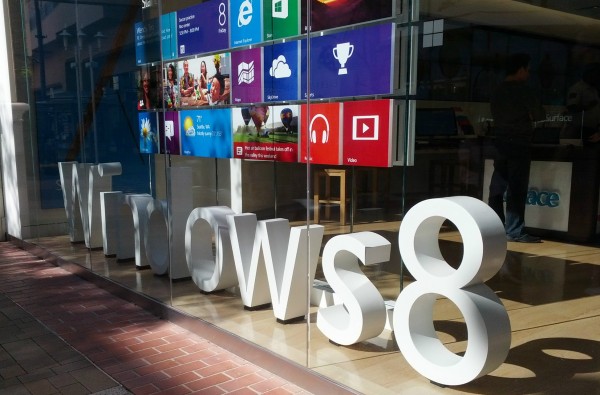Microsoft makes Windows 8 worse

On Sunday, Paul Thurrott asked (geez does this guy ever sleep) the question: "What the Heck is Happening to Windows?" The answer is hugely pertinent to the BetaNews reader community. Thurrott refers specially to Windows 8.1 development, and colleague Wayne Williams gives great overview of what to expect in Update 1, today.
The problem: What Windows is becoming, as Microsoft tries to satisfy its legacy customers while embracing future devices, particularly those using so-called NUIs, or new user interfaces, like touch and voice. Wayne smartly observes: "Maybe I’m just being overly negative here but with all the changes Microsoft has made along the way, Windows 8.x feels like it’s becoming a Frankenstein product stitched together with compromises".
The Monster Rages
But I say that Microsoft's operating system was Frankenstein long ago. What was Windows 95, which slapped a pseudo-32-bit user interface on top of MS-DOS? "Stitched together with compromises". Before Win95's release, I used IBM OS/2 Warp, which for all its other problems was truly 32-bit and no Frankenstein. But the monster roamed the planet, freely embraced. OS/2 is a headstone and grave.
The computing world accepted Frankenstein and all its violent mood swings -- can you say Blue Screen of Death, baby! During the early 2000s, a growing number of escapees fled to OS X, following those already using Linux. But not until smartphones' rise in popularity, set off by iPhone in mid-2007, did the masses experience in Android and iOS a gentler beast.
To this day, a large number of PC users cling to Windows XP, despite persistent Microsoft efforts to pull the plug and put the operating system in the ground for good. XP is less Frankenstein -- an operating system built for all customers, businesses and consumers, in robust 32-bit and 64-bit versions. That evolution, from monster to man, took time. Service Pack 2 imbued greatness into Windows XP. Gulp, 10 years ago.
Vista brought back the monster -- eyes red, body parts stitched, and clawed-fists tearing apart the PC's heart. Windows 7 cooled Frankenstein's temper, but its successor is nothing less than Dr. Jekyll and Mr. Hyde -- classic user interface hiding behind Modern UI. The user experience truly is schizophrenic.
Too Many Cooks
For years, I've said that Microsoft's Windows problem is simple: Too many cooks. There are too many people making decisions with too many conflicting agendas. Most significantly, Microsoft listens too much to customer feedback. Design by committee is no way to create anything.
I agree with Thurrott: "You can't please everybody, Microsoft. So stop trying. It's time to double down on the people who actually use your products, not some mythical group of consumers who will never stop using their simpler Android and iOS devices just because you wish they would".
That's exactly right. Last decade, as I expressed over at Microsoft Watch (pardon, no link because the site is gone): Design by committee leads to mediocre products. There are reasons why movies have a single director, and the most successful often carry one man's or woman's vision (okay, brothers with the Coens). For years, Steve Jobs took similar role guiding Apple. One vision. No committee-rule.
Vista epitomizes Microsoft's design-by-committee approach. Windows 7 much less so. As Thurrott observes, Microsoft handed Windows development over to Steven Sinofsky "a guy who could push through a Steve Jobs-style, singular product vision". I agree, in September 2011 posting: "Steven Sinofsky is the new Steve Jobs". But Sinofsky couldn't repeat the success.
"Sadly, the result was Windows 8", Thurrott opines. "The reason this happened is that while Sinofsky had the maniacal power and force of will of a Steve Jobs, he lacked Jobs' best gift: An innate understanding of good design. Windows 8 is not well-designed. It's a mess. But Windows 8 is a bigger problem than that. Windows 8 is a disaster in every sense of the word". Sadly I agree, writing in December 2012: "Windows 8 is a disaster".
End Committee Rule
I only partly agree. Sinofsky did delegate with regards to design. Yes, vision he had, but committee rule is the bigger problem. Windows 8 tries to satisfy too many needs for too many customers and meets none of them well. Thurrott is right. "You can't please everybody", but Microsoft tries way too much. This is an endemic problem that new CEO Satya Nadella must resolve.
Where Thurrott and I disagree is Windows 8's creator. He calls the operating system Sinofsky's "baby", product of the "single vision". I see committee rule and conflicting customer agendas to be core to the "disaster". Thurrott looks at what comes next as the problem, and on this point we agree.
"Windows 8.1 Update 1 again proves that design by committee never works, and that by not strictly adhering to a singular product vision, the solution that is extruded out to customers on the other side is messy, convoluted, and compromised", Thurrott opines. He's absolutely right.
In good writing, the first rule is to identify the audience. The second is to write for them. They don't write for you for them. Similarly, Microsoft must choose its audience and develop products for them, fulfilling in process the highest standard of great design: Giving people something they don't know they need. You can't ask them, because they don't know. If you listen too much, the result looks something like Windows 8.1 Update 1.
Photo Credit: Joe Wilcox